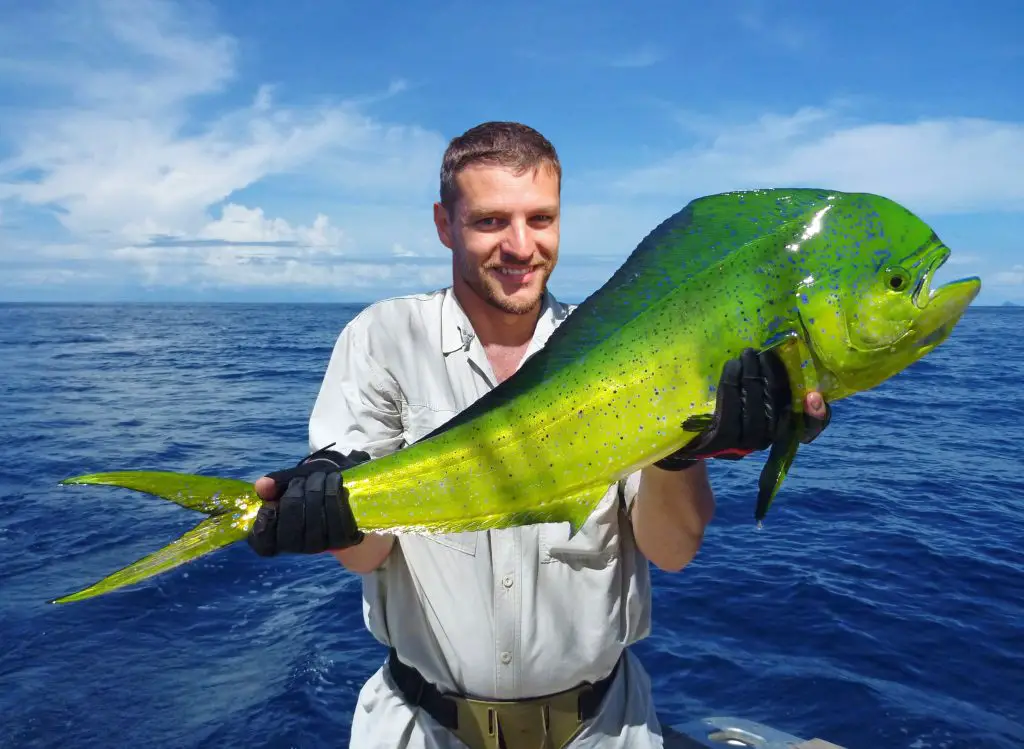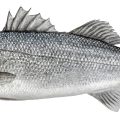The differences between Grouper and Mahi Mahi lie in their appearance, habitat preferences, and availability. They are from different genera and species, and their characteristics have many differences. However, there are some similarities in how they taste.

Grouper vs. Mahi Mahi
The grouper is a marine ray-finned fish from the family Serranidae, subfamily Epinephelinae, and order Perciformes. The family Serranidae also includes seabass. Fish of two large genera, Epinephelus and Mycteroperca, are usually given the name “grouper.”
Some smaller genera also have fish known as grouper, so it’s become somewhat of an umbrella term. The word “grouper” came from the Portuguese name “garoupa.”
Most groupers are found in shallow tropical waters, specifically among coral reefs and artificial reefs. They are distributed throughout the Gulf of Mexico, the Bahamas, the Caribbean, the Brazilian coast, and the Florida Keys of the United States. They hang around ledges, shipwrecks, or hard bottoms like rocks and reefs.
Just like grouper, the Mahi Mahi is a species of ray-finned fish. Mahi Mahi is also known as a common dolphinfish and is more often called Dorado. The name “Mahi Mahi” comes from the Hawaiian language, the literal meaning of the reduplicated word being “very strong.”
The scientific name of this fish is Coryphaena hippurus. They are one of the two members of the family Coryphaenidae, along with the Pompano Dolphinfish. Though they are named Dolphinfish, they have no relation to dolphins. Mahi mahi is found in tropical, subtropical, and temperate waters worldwide, but their distribution is mainly concentrated in the waters of Costa Rica, Hawaii, the Indian Ocean, and the Gulf of Mexico.
How do you distinguish between a Grouper and a Mahi Mahi by appearance?
It’s easy to distinguish between a grouper and a Mahi Mahi because they look drastically different. Though both fish can be very large in size as well as heavy, that’s more or less where the similarities end.
There are many species and types of groupers, and they look different from each other. However, most groupers still have some basic similarities, which allows you to distinguish them as one immediately. For example, all groupers have large, robust bodies. They have huge mouths, and their lower jaw is slightly pushed outwards compared to their upper jaw.
Their eyes are set high on a broad head. Their bodies are round like a lap pillow. As for their fins, their pelvic and anal fins are set way back on the body, while their dorsal fin is spiny and soft. They may have different types of coloration, but the most commonly seen groupers usually have gray, brown, grayish brown, dark gray, and similar shades of body color. Many groupers also have darker markings and patterns all over their bodies. Moreover, groupers’ caudal fins or tails are not usually separated into two.
On the other hand, the first thing about a Mahi Mahi that will catch your eyes is their vibrant coloration, wildly different from the dull grays of the groupers. Mahi Mahi usually has a golden-yellow body color, with iridescent blue pectoral fins. The most commonly found Mahi Mahi has a brilliant neon green coloration. Some of them have an overall green body that lightens into a lime yellow color towards the belly.
In contrast to the round bodies of groupers, Mahi Mahi’s body is long. The frontal part is round, with the head and mouth being blunt, but the body gradually narrows towards the tail. A part of their heads is sometimes found to be deflated inwards. Their pectoral fins are usually very big, starting from their foreheads and extending up to their tails. Another distinguishable feature from groupers is that the tails of Mahi Mahi are separated into two in the middle.
Are Grouper and Mahi Mahi Edible?
Both grouper and Mahi Mahi are edible fish and are enjoyed by many. However, Mahi Mahi is more widely eaten because its population is huge, and there is no risk of it becoming extinct, and there aren’t many restrictions imposed on its fishing and harvesting. Every year, fishermen and hobbyists catch several Mahi Mahi, a fairly common meal.
However, the grouper population is a bit more limited, and certain grouper species are on the brink of extinction. This is because grouper fish take more time to reproduce. Since groupers reproduce in congregations, many people target the locations of these congregations to get an easy catch, which results in many potential offspring getting nipped in the bud.
In many places, groupers are so overfished that several restrictions have been imposed on their fishing, like in Florida. There is also the fact that eating groupers come with some health risks due to the high amount of mercury present in their bodies. For all these reasons combined, grouper is less available and less popular than mahi mahi.
What is the difference between the taste of groupers and Mahi Mahi?
The taste of grouper is often compared to its fellow family member, sea bass. More precisely, its taste lies between sea bass and halibut. The flavor of grouper fish is very mild. A light and sweet taste will fill your mouth from the first bite. Grouper meat comes in large, chunky flakes similar to crabs or lobsters.
Mahi Mahi has a somewhat similar taste to grouper. Like most other tropical fish, it is sweet tasting but only semi-mild, so slightly stronger than grouper. The meat is dense like swordfish, but the flakiness of it can be compared to a groupers. It has a stronger fishy flavor than white fish like cod, but not so fishy that the taste is ruined. The meat isn’t rich or oily and has moist flakes. In conclusion, groupers and Mahi Mahi don’t have any similarities in appearance, habitat, or availability, but some similarities are noted in their taste. Both will be enjoyable to have a feast on.











